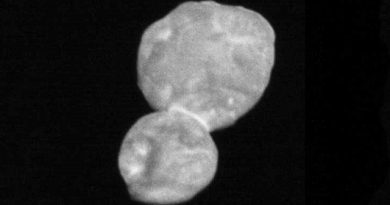Mars contains more oxygenated water than previously thought
Water on Mars could hold more oxygen than previously believed, theoretically enough to support aerobic respiration, suggests a new research challenging traditional beliefs about the Red planet’s habitability.
A team led by scientists from the California Institute of Technology (Caltech) and NASA’s Jet Propulsion Laboratory (JPL), calculated that if liquid water exists on Mars, it could — under specific conditions — contain more oxygen than previously thought.
According to the study reported in the journal Nature Geoscience, the levels could even theoretically exceed the threshold needed to support simple aerobic life.
However, the finding runs contrary to the current, accepted view of Mars and its potential for hosting habitable environments.
Researchers have long dismissed the idea that liquid water on Mars might be oxygenated, given that Mars’s atmosphere is about 160 times thinner than that of Earth and is mostly carbon dioxide.
“Oxygen is a key ingredient when determining the habitability of an environment, but it is relatively scarce on Mars,” said Woody Fischer, a Professor at Caltech.
“Nobody ever thought that the concentrations of dissolved oxygen needed for aerobic respiration could theoretically exist on Mars,” added Vlada Stamenkovic from the JPL.
For the study, the team developed a chemical model describing how oxygen dissolves in salty water at temperatures below the freezing point of water.
Then, they examined the global climate of Mars and how it has changed over the past 20 million years.
The team found that, at low-enough elevations (where the atmosphere is thickest) and at low-enough temperatures (where gases like oxygen have an easier time staying in a liquid solution), an unexpectedly high amount of oxygen could exist in the water — a value several orders of magnitude above the threshold needed for aerobic respiration in Earth’s oceans today.
Further, the locations of those regions have shifted as the tilt of Mars’s axis has changed over the past 20 million years. During that time, the highest oxygen solubilities have occurred within the past five million years.
The findings could inform future missions to Mars by providing better targets to rovers searching for signs of past or present habitable environments, Stamenkovic said.




